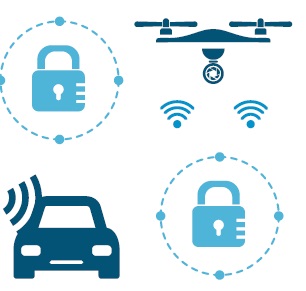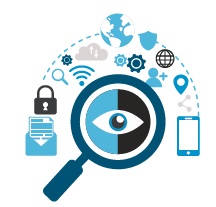
Welcome to the final part of analysis of our latest consumer research report into the IoT. We surveyed 2,500 consumers from 7 countries to hear more about their hopes and expectations for future IoT technology. You can read the previous two posts here and here.
In this concluding chapter, I’d like to spend some time discussing a relatively new concept in our industry, Silent Authentication. It’s something we’re paying particular attention to and promises to revolutionize the way we access devices and services in the years to come.
Simply put, silent authentication is where a human is authenticated by intelligent systems, including machine learning, in a transparent way in order to access services. This is done by the person being authenticated by multiple channels, such as behavior, habits, geolocation, tone of voice, body language etc… So, there’s no need for you to log in with a username and password. You are the key.

Originally designed for risk-based authentication for online banking transactions, it is quickly finding a home in many other scenarios where the user must be authenticated.
And it’s a concept that is easily grasped by the consumers we spoke to. 60% of surveyed consumers say that silent authentication will be important or critical to them to access personalized services. Even more encouraging is that it is embraced by the young — 70% of those aged 25-34 years old are in favor of the concept. Furthermore, almost two-thirds (62%) would accept silent authentication as a method to access their online services. These results demonstrate how valuable it could be, given no respondent has used it but many see its immediate potential.
We asked why they would be open to silent authentication:
- 44% cite greater convenience
- 44% believe it will decrease identity theft and fraud
- 39% think it will make accessing services easier
There are a number of areas where silent authentication could play a major role, among them 47%:
- think they’ll be using it to get through passport control at airports
- want to use it at their bank instead of carrying ID
- want to use it on their commute instead of a ticket
This suggests an element of trust in silent authentication, given how security sensitive these preferred areas are.
Of course, with any new technology, people do have concerns about whether silent authentication would be safe.
Two thirds of consumers surveyed expressed concerns about it being very risky. We asked those who were against the concept from the start to list out their main concerns. The top three were:
- Privacy invasion
- Data misuse by companies
- Not knowing when they were being authenticated
Interestingly, only a fifth of those would prefer to use existing methods such as passwords and payment cards. This means that consumers need educating on the security methods involved in silent authentication as well as reassurance that their data is protected to increase trust. So, if we as an industry can effectively spell out the benefits and address valid concerns, we are confident sentiment will become more positive. After all, it is still very early days for the technology.
Security in the Internet of Things

We ended our survey by looking at who consumers trust to secure their IoT experience. Device manufacturers and security companies came out at the top.
With major data breaches happening almost weekly it is no surprise that consumers are keen to see security play a major role in the IoT. 95% think the security of IoT devices is important and 64% would be willing to pay a premium for a guarantee of security on IoT devices. Further security of the device is very important to consumers as well as the ease of use.

As with silent authentication there is still work to be done to earn the public’s trust when it comes to the IoT. 65% worry about who their data is shared with and 63% are concerned what their data will be used for.
It is also true that 62% of those who own at least one IoT device believe there are current security needs that need to be improved.
Download the complete Gemalto 2030 Internet of Things
Consumer Research Report here. Includes full country analysis.
Our consumer report shows that the vast majority see a very bright future for the IoT and four in five think it will improve their lives. There will be challenges to address in terms of regulation, transparency and ensuring consumers to remain in control of their data, but the potential is limitless. These are exciting times for everyone involved in the Internet of Things, and with new approaches like silent authentication soon to hit the mainstream the future may be a lot closer than our 2030 predictions.


